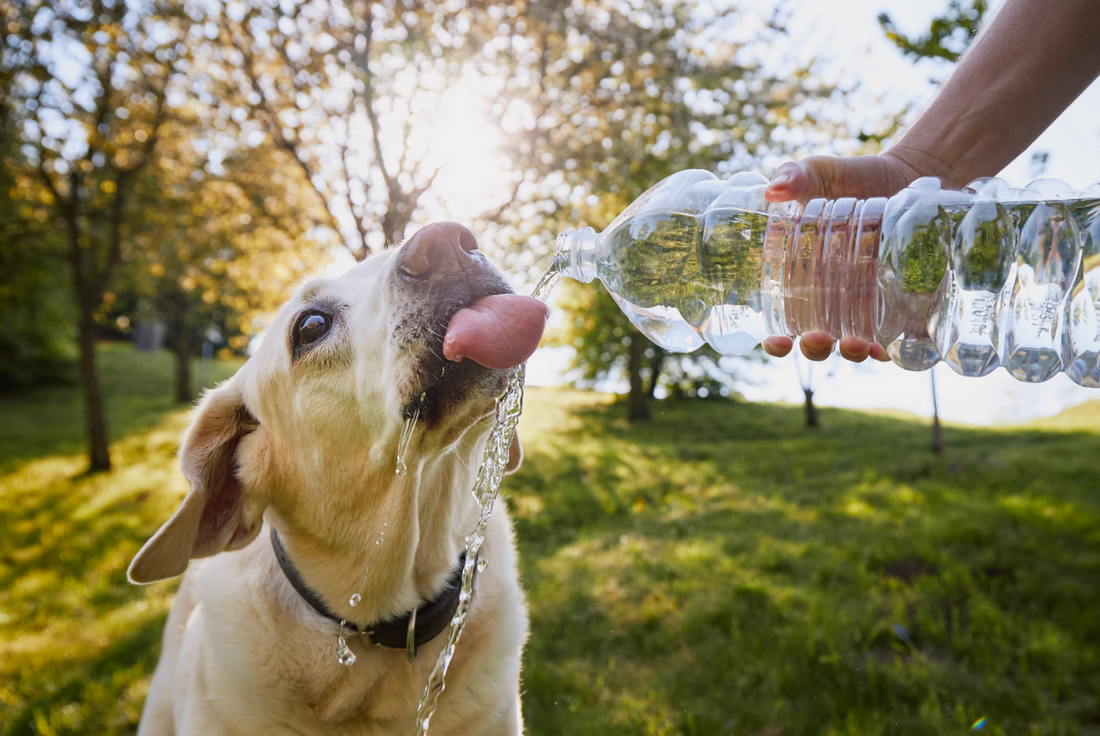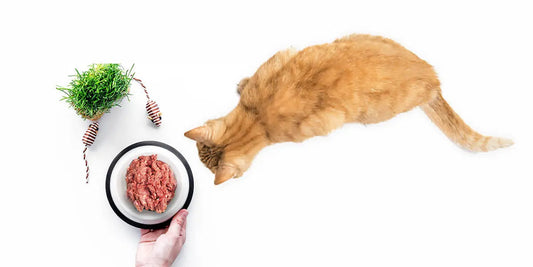
How Do I Get My Dog to Drink More Water?
Written by Darwin's
Proper hydration is essential for your dog's overall health and well-being. However, some dogs may not drink enough water, leading to potential health issues. There are many effective and practical ways to encourage your dog to drink more water. By implementing these strategies, you can ensure that your furry companion stays adequately hydrated.
Understanding the Importance of Hydration: How Much Water Does A Dog Need?
Ensuring that your dog gets enough water is crucial because it helps maintain proper organ function, aids digestion, regulates body temperature, and promotes healthy skin and coat. Hydration is especially vital during hot weather to help prevent heat exhaustion or if your dog is active or nursing puppies.
Determining the appropriate amount of water for a dog to drink depends on several factors, including the dog's size, activity level, and environmental conditions. According to the American Kennel Club (AKC), dogs generally require 0.5 to 1 ounce of water per pound of body weight per day. For example, a 50-pound dog would need approximately 50 to 100 ounces (or about 6 to 12 cups) of water daily. However, it's important to note that this is a general guideline, and individual needs may vary. Factors such as exercise, weather conditions, and the presence of certain health conditions can increase a dog's water intake requirements. It's essential to monitor your dog's water consumption and ensure fresh, clean water is readily available throughout the day. Consulting with a veterinarian is advised for specific recommendations based on your dog's unique needs and circumstances. (Source: American Kennel Club, "How Much Water Should a Dog Drink?")
Signs and Symptoms of Dehydration in Dogs
To address your dog's water intake, it's crucial to be aware of the signs that indicate dehydration.
- Dry Gums
- Loss of Skin Elasticity
- Lethargy
- Sunken Eyes
- Reduced Appetite
- Panting and Increased Heart Rate
- Dry Nose
If you notice any of these signs of dehydration in your dog, it is crucial to take immediate action to rehydrate them. Offer fresh, clean water and encourage them to drink. If your dog continues to show signs of dehydration or if you are concerned about their health, it is advisable to consult your veterinarian for proper guidance and treatment.
Remember, prevention is key when it comes to dehydration. Always ensure that your dog has access to clean, fresh water throughout the day, especially during warm weather or after physical activity. Monitoring your dog's water intake and being attentive to any signs of dehydration will help maintain their overall health and well-being.
7 Ways to Get your Dog to Drink More Water
Make Fresh Water Easily Accessible
Ensure that fresh water is always available for your dog. Place multiple water bowls in easily accessible areas around your home and yard. Consider using spill-proof bowls, especially if you have an active or curious pup.
Choose the Right Water Bowl
The type of water bowl you use can influence your dog's willingness to drink. Opt for stainless steel or ceramic bowls, as they are less likely to retain odors or bacteria. Avoid plastic bowls, as they can leach chemicals and develop scratches that harbor bacteria.
Keep Water Fresh and Clean
Dogs prefer clean and fresh-tasting water. Change the water in your dog's bowls daily and wash them thoroughly. This will prevent the buildup of residue or contaminants that might discourage your dog from drinking.
Enhance Water Palatability
If your dog is hesitant to drink plain water, try adding flavor to make it more enticing. You can use low-sodium chicken or beef broth, or even a small amount of unsalted tuna water. However, avoid additives like sugar, salt, or artificial flavors.
Hydration through Food and Treats
Incorporate moisture-rich foods into your dog's diet to boost hydration. Wet dog food or adding water to dry kibble can help increase their overall water intake. Additionally, you can freeze low-sodium broth or water into ice cube trays and offer them as hydrating treats.
Consider a Dog Water Fountain
Some dogs are naturally drawn to running water. Investing in a dog water fountain can be an effective way to encourage them to drink more. The flowing water mimics a freshwater source, making it more appealing to your furry friend.
Set a Drinking Routine
Establishing a routine can help regulate your dog's water intake. Offer water at regular intervals throughout the day, especially after meals and physical activity. By creating consistency, you can encourage your dog to drink regularly.
Promoting Optimal Hydration for a Healthy and Happy Dog
Proper hydration is crucial for your dog's overall health and well-being. By implementing these simple tips, you can ensure that your dog stays hydrated and avoids potential health issues associated with dehydration. Remember to monitor their water intake and consult a veterinarian if you notice persistent signs of dehydration. With your care and attention, your beloved companion will thrive with a healthy and hydrated lifestyle.


